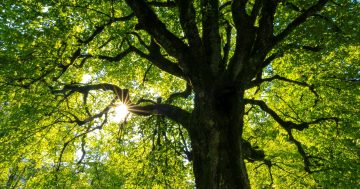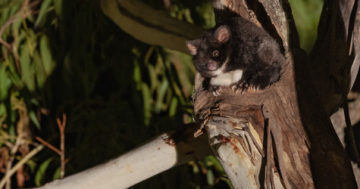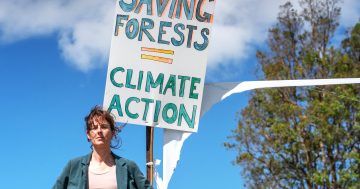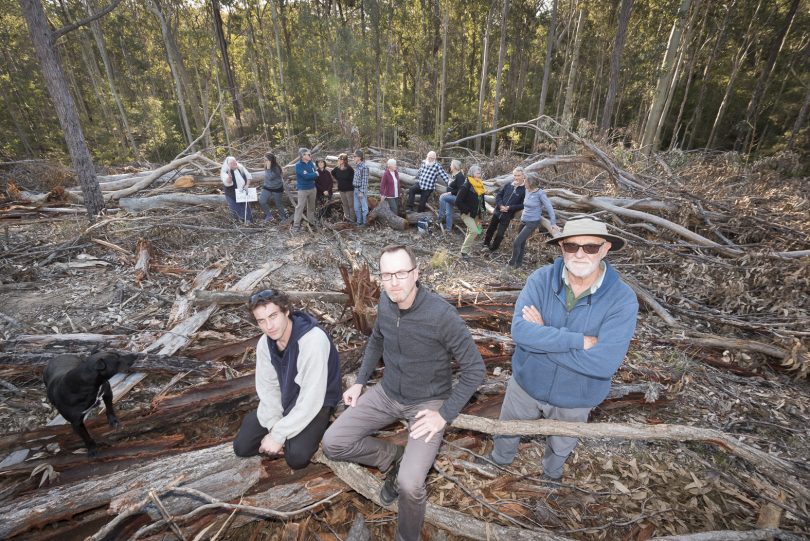
L to R Foreground: Mitch Vella, David Shoebridge Greens MLC, Derek Anderson of Coast Watchers with supporters of Friends of the Forests, Mogo in the background, surrounded by what Mr Shoebridge says is the “waste” left behind by Forestry NSW. Photo: Gilliane Tedder.
Ongoing logging in the Mogo State Forest, south of Batemans Bay is being monitored by the Environmental Protection Authority (EPA), amid calls to value and use local forests in new ways.
“There’s so much more to gain from keeping our forests than destroying them,” says NSW Greens MP David Shoebridge.
“Logging state forests close to settlements like Mogo is totally a lost opportunity for recreational trail building, and a town like Mogo could gain such a financial benefit from being a mountain biking centre in the same way that Scottsdale in Tasmania and Woolgoolga in northern NSW have become.
“It would be an economic boost for the area, growing businesses and jobs, but the forests have to be maintained as they are – beautiful and natural – they can’t be chopped down.”
Mr Shoebridge made the comments during a recent tour of the forestry operation hosted by conservation group, Friends of the Forest.
Conservationists have made a number of complaints to the EPA, primarily around concerns for the endangered Swift Parrot.
A spokesperson for the Environment Protection Authority told Region Media, “The EPA maintains an active compliance and enforcement program to ensure that native forest logging operations are complying with the environmental rules set by the NSW Government, the Integrated Forestry Operations Approval (IFOA).”
“The IFOAs require important food sources for the endangered swift parrot to be retained and protected in known foraging areas for the species, during logging operations by Forestry Corporation of NSW.
“The EPA has inspected the logging operation in Mogo State Forest twice since the logging operation commenced. This operation is subject to an active EPA investigation, following complaints received, and no further comment will be provided on the detail of the investigation at this time.”
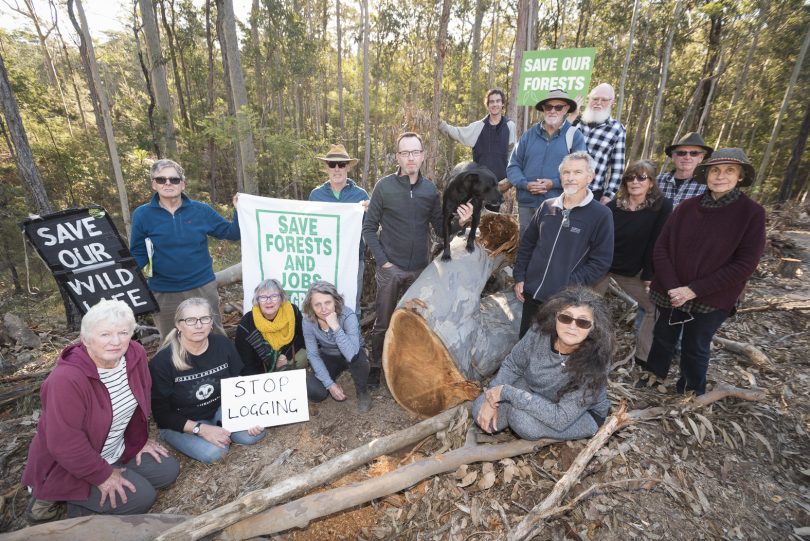
NSW Greens spokesperson for the Forests, David Shoebridge MLC and supporters of Friends of the Forests, Mogo gather around a tree top approximately 60cm in diameter. Photo: Gillianne Tedder.
In response, the Forestry Corporation of NSW says, “As we do before all our operations, we have spent many months developing a detailed harvest plan prepared in line with strict rules to protect threatened species and soil and water and ensure the forest regenerates well for the future.”
“Our qualified forest technicians and ecologists have conducted thorough surveys for threatened species and set aside around a quarter of this compartment in exclusion zones that will be left untouched.
“We have also set aside additional feed trees for swift parrots in line with specific rules that were developed by expert panels to protect this particular species and the entire area will be regrown to ensure it continues to provide habitat for the swift parrot and other native wildlife.”
Mogo State Forest is a regrowth forest that has been producing timber for generations and has been “regenerated several times in the past,” the Forestry spokesperson says.
“This is a selective harvesting operation that will produce a mix of high-quality products and low-quality by-products, made up of 38 percent sawlog, 39 percent pulp, and 23 percent firewood.”
Mr Shoebridge says an industry that views nature as waste is an industry that has no social license to operate.
“We know the future of forestry in NSW and Australia is a future based upon plantations,” he says.
“That’s where the jobs are. That’s how we can sustainability harvest timber, and that’s how we can protect these beautiful native forests and the animals and plants that rely on them for survival.
“Too many of our trees are being wasted, turned into pulp for disposable packaging and paper.”
The Forestry Corporation of NSW says it’s Mogo operation will conclude in September.









